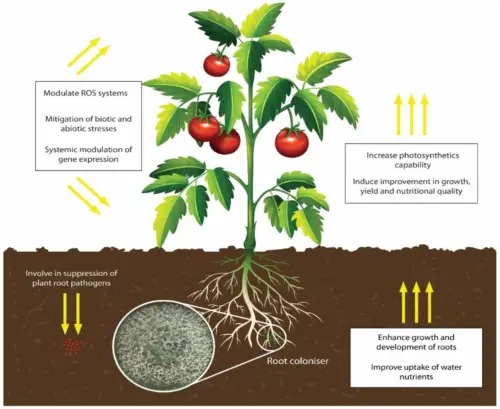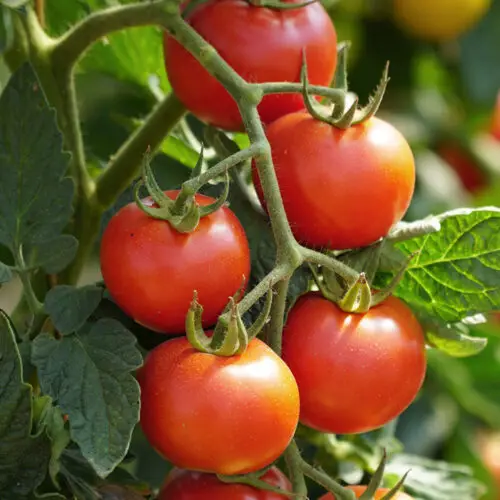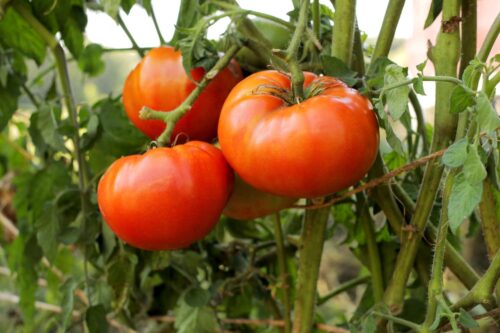To improve tomato plant growth, ensure they receive adequate sunlight, water, and nutrients. Proper pruning and staking can also support healthier growth.
Tomatoes are popular garden plants, producing delicious, versatile fruits suitable for a wide range of culinary uses. However, achieving robust growth and abundant yields requires careful attention to optimal growing conditions and appropriate care. In this guide, we will explore the essential steps you can take to improve the growth and vitality of your tomato plants.
From providing the right growing environment to implementing effective maintenance practices, these strategies will help you cultivate thriving tomato plants and harvest bountiful, flavorful tomatoes for your enjoyment. Whether you are an experienced gardener or a novice enthusiast, learning how to maximize the growth of your tomato plants can lead to a more successful and rewarding gardening experience.
Choosing The Right Tomato Varieties
Choosing the right tomato varieties is crucial for improving tomato plant growth. Selecting varieties that are well-suited to your climate and considering factors like disease resistance and fruit size can help ensure a successful harvest.
Determining Your Growing Conditions
Understanding your climate and sunlight exposure is crucial for selecting the right tomato variety. Considering Your Gardening Goals
Considering Your Gardening Goals
Think about whether you want to can tomatoes, enjoy fresh slices, or grow cherry tomatoes for snacking. Tomato Varieties Table:
| Tomato Variety | Growth Habit | Main Use |
|---|---|---|
| Roma | Determinate | Canning and Sauces |
| Beefsteak | Indeterminate | Slicing |
| Cherry | Indeterminate | Snacking |
Garden Goals Impact On Variety Choice
Your intended purpose for growing tomatoes will directly influence the variety you choose. Selecting the Right Tomatoes Will Maximize Growth
Maximizing Growth With The Right Tomatoes
By matching the variety to your conditions and goals, you set the stage for optimal tomato plant growth.

Credit: www.mdpi.com
Preparing The Soil
Growing healthy and vibrant tomato plants starts with preparing the soil. Properly preparing the soil sets the foundation for strong, flourishing plants and bountiful harvests. Key aspects to consider include testing the soil and amending the soil to ensure it provides the essential nutrients and structure for optimal tomato growth.
Testing The Soil
Before planting your tomato seeds or seedlings, it’s essential to test the soil to assess its pH level and nutrient content. This can be done using a simple soil test kit or by sending a sample to a local agricultural extension office for analysis. The results will help determine any necessary amendments needed to create an ideal growing environment for your tomato plants.
Amending The Soil
Based on the soil test results, you may need to amend the soil to optimize it for tomato growth. Common soil amendments include compost, organic matter, and fertilizers that can address deficiencies and improve the soil’s structure. Incorporating organic matter like compost can enhance water retention, soil aeration, and microbial activity, fostering a healthy environment for tomato roots to thrive.
Proper Planting Techniques
Discover the key to boosting tomato plant growth with proper planting techniques. By selecting the right soil, providing adequate sunlight, and watering consistently, you can ensure your tomato plants thrive and produce abundant, flavorful fruit. Implementing these strategies will lead to a successful and rewarding gardening experience.
Selecting Healthy Seedlings Or Seeds
Selecting healthy seedlings or seeds is crucial for the successful growth of tomato plants. Look for seedlings or seeds with no signs of disease, damage or stress. Choose varieties that are suitable for your climate and soil conditions.
Understanding Transplanting
Understanding the process of transplanting is essential for the successful growth of tomato plants. Ensure that the seedlings are well-established before transplanting them into the garden. Harden off the seedlings by gradually exposing them to outdoor conditions before transplanting.
When transplanting, handle the seedlings carefully to avoid damaging the roots. Plant them at the right depth, burying the stems slightly to encourage strong root development.

Credit: www.homedepot.com
Providing Adequate Water And Sunlight
Proper watering and sunlight are essential for the healthy growth of tomato plants. Here are some key tips to ensure your plants thrive:
Establishing A Regular Watering Schedule
Tomato plants need consistent moisture levels to grow well.
Water deeply, ensuring the soil is moist but not waterlogged.
- Create a watering schedule based on weather conditions.
- Check the soil moisture regularly to prevent over or under watering.
- Use a soaker hose or water at the base of the plant to avoid wetting the foliage.
Ensuring Sufficient Sun Exposure
Sunlight is crucial for photosynthesis, which is essential for plant growth.
Ensure your tomato plants receive at least 6-8 hours of direct sunlight daily.
- Choose a sunny spot in your garden or place containers in a sunny location.
- Monitor changes in sunlight patterns throughout the day and adjust plant placement if needed.
Supporting Tomato Plants
Supporting tomato plants is essential for their proper growth and productivity. By providing them with the necessary support, you not only help them stand upright but also prevent diseases and ensure better airflow. There are two common methods for supporting tomato plants: using stakes or trellises, and practicing pruning and training. Let’s look at each of these methods in detail to help you improve your tomato plant growth.
Using Stakes Or Trellises
Using stakes or trellises is a practical method to provide support to your tomato plants. Staking involves driving a sturdy stake into the ground adjacent to each tomato plant and tying the main stem to the stake as the plant grows. This helps keep the plant upright, preventing it from bending or breaking due to the weight of the fruit it bears.
When using stakes, it is important to choose ones that are at least 6 feet in height and made of materials like wooden dowels or bamboo. Remember to place the stakes at least 6 inches deep into the ground, ensuring they are firm and stable.
Trellising, on the other hand, involves using a sturdy frame or mesh structure for the tomato plants to climb on. This method is especially useful for indeterminate varieties that have vigorous growth and can reach significant heights. As the plants grow, tie the main stem to the trellis using soft ties or twine, allowing the side branches to spread out naturally.
Practicing Pruning And Training
Pruning and training your tomato plants can significantly improve their growth and productivity. Begin by removing the suckers, which are the small shoots that grow in the leaf axils of tomato plants. By removing these suckers, you redirect the plant’s energy towards producing more fruit rather than excessive foliage.
Training your tomato plants involves gently tying the stems to the support structure, encouraging vertical growth and proper spacing between the branches. This improves airflow and sunlight penetration, thereby reducing the risk of fungal diseases.
It is important to note that not all tomato plants require pruning, especially determinate varieties that have a predetermined size and growth habit. However, pruning and training can be highly beneficial for indeterminate varieties, allowing you to manage and control their growth more effectively.
By using stakes or trellises and practicing pruning and training, you can provide the necessary support to your tomato plants and ensure their optimal growth. These methods not only help the plants stand upright but also enhance airflow, prevent diseases, and increase fruit production. Implementing these techniques will help you achieve healthy, vigorous tomato plants that yield a bountiful harvest.

Credit: www.thespruce.com
Frequently Asked Questions On How To Improve Tomato Plant Growth?
How Do You Stimulate Tomato Plants To Grow?
To stimulate tomato plants to grow, provide sufficient sunlight, water consistently, and use a balanced fertilizer. Prune regularly to encourage growth and remove any yellow leaves. Use stakes or cages for support, and ensure good air circulation. Consider using mulch to retain moisture and suppress weeds.
How Can I Make My Tomatoes Grow Bigger And Faster?
To make your tomatoes grow bigger and faster, ensure they get plenty of sunlight, water consistently, use organic fertilizers, and prune to promote healthy growth. Additionally, provide support for the plants and remove suckers to divert energy towards fruit development.
What Is The Best Fertilizer For Tomatoes?
The best fertilizer for tomatoes is one with high potassium and phosphorus levels, such as a 5-10-10 or 10-20-10 blend.
What Is The Secret To Growing Tomatoes?
To grow tomatoes successfully, provide them with ample sunlight, water regularly but avoid overwatering, use rich soil with good drainage, and provide support for the plants as they grow. Regularly prune and remove any diseased leaves to promote healthy growth.
Conclusion
To sum up, improving tomato plant growth involves proper care, watering, fertilizing, and pruning. Use organic methods and ensure adequate sunlight and support for optimal growth. By following these tips, you can enjoy a bountiful harvest of delicious, homegrown tomatoes.
Happy gardening!
